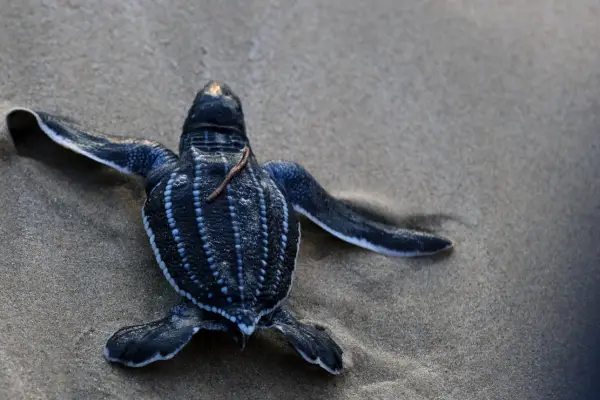Protecting Endangered Sea Turtles
Sea turtles have existed for over 100 million years, surviving mass extinctions that wiped out dinosaurs. Yet today, all seven remaining sea turtle species are under threat. Population numbers for most species are a fraction of what they once were.
Two species in particular – hawksbill and leatherback turtles – face a very high risk of extinction. Concerted conservation efforts are underway to prevent the loss of these ancient mariners. With public awareness and support, we can ensure future generations enjoy our oceans with these magnificent creatures.
Threats Facing Sea Turtles
Several key threats have brought sea turtles to the brink of extinction. The overarching threat is human activity, both on land and in the oceans.
The single biggest threat across all species is accidental capture in fishing gear, primarily gillnets and trawls. One study found that worldwide, over 200,000 loggerheads and 50,000 leatherbacks are caught annually in longline fisheries alone. These turtles become entangled in the gear and drown.
Other major threats include:
- Habitat destruction – crucial nesting beaches and feeding grounds damaged by coastal development
- Pollution – ingestion and entanglement in marine debris like plastics; oil spills; chemical runoff
- Poaching – illegal egg harvesting; hunting turtles for meat, shells
- Climate change – rising sand temperatures changing male/female ratios; sea level rise swamping nests
All seven species have declined drastically over the past century due to these accelerating threats. Hawksbills and leatherbacks stand out as facing particularly high risks of extinction.

The Hawksbill Turtle
The hawksbill sea turtle has a distinctive curved beak shape, beautifully patterned shell, and typically small size of 2-3 feet and 100-200 lbs. They inhabit tropical reefs and areas with coral, sponges and sea grasses. Hawksbills mostly eat sponges, using their narrow heads to reach into small crevices.
Hawksbill numbers have fallen over 80% in the last 100 years – from around 11 million to fewer than 25,000 nesting females today. Their Category: Critically Endangered status is higher than any other marine turtle species.
Major threats to Hawksbills include:
- Hunting for decorative shell (“tortoiseshell”) – still continues especially in SE Asia despite bans.
- Egg poaching and nesting habitat destruction, especially in the Western Atlantic region.
- Entanglement in abandoned fishing gear and ingestion of marine debris.

The Leatherback Turtle
Leatherbacks are the largest turtles and one of the most migratory, making epic journeys of over 10,000 miles between nesting and feeding grounds. They grow up to 6 feet long and exceed 2,000 pounds.
Instead of a hard shell, leatherbacks have a thick rubbery skin with embedded bones and seven ridges down their backs. They mainly eat jellyfish and can dive over 3,000 feet deep.
In 1980, there were approximately 115,000 female leatherbacks worldwide. Today mature nesting females number below 34,000 and the Eastern Pacific subpopulation is critically low, at well under 1% of historical levels.
Major threats devastating leatherback populations include:
- Accidental capture in commercial fisheries – estimated annual bycatch mortality up to ~65% in some areas
- Plastic bag ingestion – leatherbacks mistake floating bags for jellyfish
- Development and light pollution at nesting beaches – bright resort lighting disorients hatchlings
- Egg poaching and nest destruction for tourism activities
Clearly, hawksbills and leatherbacks face immense threats in both the oceans and on land at nesting beaches. Concerted efforts to reduce these threats are having success in stabilizing populations in some areas, but both species remain at high risk of extinction without continued conservation focus.
Conservation Efforts Underway
While numbers are still low, some nesting populations are showing signs of recovery thanks to protection programs such as:
- No-take fishing areas and enforced limits on sea turtle bycatch levels
- Nesting beach protection with egg relocation, hatcheries, and reduction of light pollution
- Community-based protection programs that pay locals to monitor and conserve turtles rather than poach nests
- Removal of invasive species that prey on hatchlings and restoring native vegetation
- Developments of turtle-safe fishing gear to avoid accidental entanglement
These targeted efforts highlight that recovery is possible if adequate protections are put in place to address the major threat levels that hawksbills and leatherbacks face during all life stages. Continued expansion of such projects relies on public interest and support for funding and volunteers.
How You Can Help Protect Sea Turtles
Though their fate is far from certain, there are some hopeful signs for sea turtle recovery. As ancient mariners that have navigated Earth’s oceans for millions of years, they deserve society’s support through this precarious period.
You can help protect turtles by:
- Avoiding single-use plastics, reducing contributions to marine debris
- Supporting sustainable fisheries with minimal bycatch – look for turtle-safe labels
- Volunteering for beach cleanup and nest monitoring programs
- Donating to non-profits focused on sea turtle conservation
- Choosing turtle-friendly tourism operators instead of encroaching on nesting sites
- Spreading awareness among family and friends to foster care for these remarkable creatures
With small daily actions and voices urging greater political effort, the tide may still turn for species like hawksbills and leatherbacks to be around for millions more years to come. They have survived ice ages and asteroid strikes before – with our help, they can survive the age of humans.


